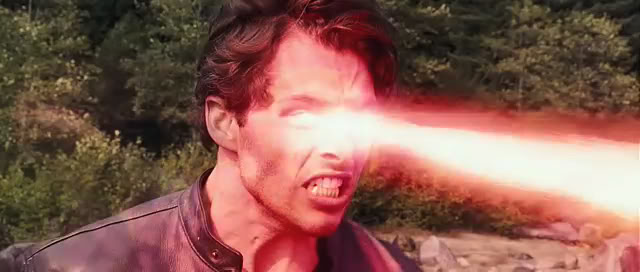Focusing Your Creative Energy
“The successful warrior is the average man, with laser-like focus.”
— Bruce Lee
Early in my career as a web designer I had trouble focusing. I started off projects strong, but I had trouble following through on them.

Looking back at my various failed starts and poorly executed work, I think of Cyclops from the X-Men series (Jerry Seinfeld says all we men consider ourselves low-level superheroes). Cyclops can’t control the energy beams that come out of his eyes — they’re extremely powerful, but also destructive and a waste of energy. Think of a fire hydrant without a hose attached.
Cyclops needs the help of special eyewear to harness his optical energy so that he can point it in the direction he wants, with the intensity he wants.
Creativity is the same way for me and lot of other people: our brains are inundated with tons of great ideas, but without focus they go out scatter-shot and wind up as unfinished projects, or worse yet, never make it into a sketchbook. It ends up being all wasted energy. I was never diagnosed with ADD as a child, but I feel as though I easily could have been.
Focus is still something I have to work on daily, but the good news is I’ve figured out techniques and habits over the years to channel my creative energy in one direction at a time.
Below is a list of tools and technics I use to help me achieve focus. They can turn you into a creative Cyclops too.
Get a Notebook and Pen
A notebook and pen are essential before you even attempt to address the other sections. I don’t care if it’s Field Notes, a Moleskine, Austin Kleon’s Steal Like An Artist Journal, or a handful of loose sheets folded in half and stapled together.
Always be ready to write things down where ever you are. If your brain works like mine and you don’t write things down you will forget them. I guarantee it.
Baby Steps
In the movie What About Bob? (YouTube), Bob Wiley (played by Bill Murray) has his first appointment with his new psychiatrist, Dr. Leo Marvin (played by Richard Dreyfus). Bob has a multi-phobic personality and gets anxiety attacks all the time, every day. Doctor Marvin suggests Bob read his book, Baby Steps, which advises people make small, reasonable goals for themselves in the pursuit of their bigger goals. He tells Bob, “For instance, when you leave this office, don’t think about everything you have to do in order to get out of the building, just think to what you must do to get out of this room, and when you get to the hall, deal with that hall…”
We can apply this thinking directly to projects. Break them down from macro to micro. If you have to design a website, don’t think about designing the whole website.
Write down the baby steps:
- Capture Client Goals
- Request Content/Assets
- Create Site Map
- Wireframe Key Pages
- Design Key Pages 6. …etc.
If you ever reach an step that seems daunting, break that step down into sub-steps.
All I can say about Baby Steps is mash potatoes and gravy.
Checklists
Checklists are very closely related to Baby Steps.
I use checklists specifically for client deliverables and requests. As soon as I complete a request from the client I check that item off my list.
I could write another whole post just on checklist methodologies. You can have project checklists, daily checklists, checklists for your checklists. The checklists are endless.
I recommend reading The Checklist Manifesto by Atul Gawande for a thorough understanding of the power of checklists.
Repeat It In An Email
Whenever I reach a milestone or deadline on a project I email the client (and any other relevant people like project managers, team members) and in the email, I echo back their list of requests I captured.
I do this for two reasons:
-
it lets the client see you’re listening to them (clients usually don’t notice when you’re paying attention to them, but they hate when you don’t listen to them)
-
it helps me be sure I didn’t miss anything on my checklist
Tell Siri to Remind You
Most of you have a portable computer on you at any moment. Use it. Maybe you’re at lunch away from your desk and you get a great idea for your project. As soon as you get that idea, pull out your phone and ask Siri or Google Now, “In 15 minutes remind me to change landing page hierarchy based on Jen’s idea…”
Steve Jobs liked to say the computer is “a bicycle for the mind.” I love this phrase. I love it so much I created a Kickstarter project around it. I love it because it’s true. Amplify your mental abilities and creativity with your mobile devices.
These devices are literally waiting to help you accomplish more.
Now Go Cyclops the Hell Out of Some Projects

I’m going to stop here before I list more tips for creative focus. I think this is a good foundation of ideas you can start applying to your you work right now.
They’re open to changing as needed to match your particular workflow.
If there’s anything you should take away from this it’s the importance of defining your goals and objectives and then breaking them down into manageable, actionable pieces.
You have the creative energy, now unleash it with focus.